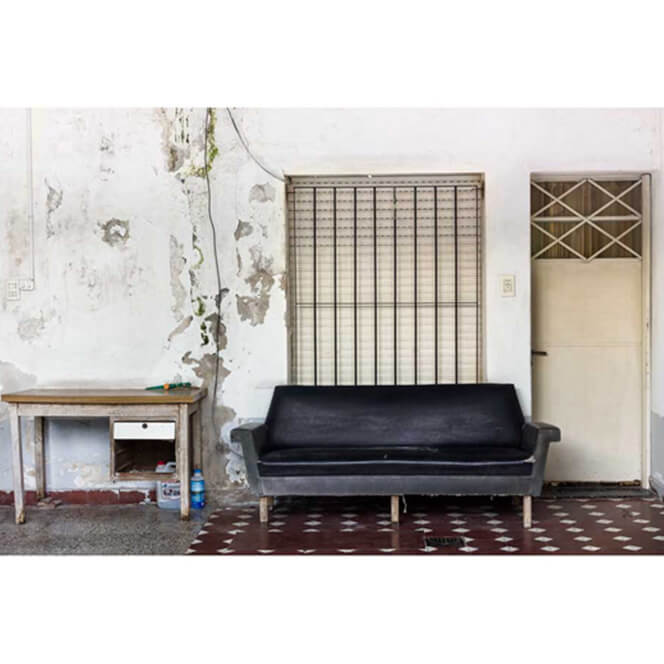Isolation put on the table the discussion regarding access to rights, to essential goods, to water, electricity, and housing as part of an integral right to health[i]. At first, the question of how far States have data on their population on the margins, about people not formally registered in the labour market; highlighted the fragility of a system that ceased counting part of the inhabitants at least over the last four years in Argentina and therefore brought to a standstill caring of peoples problems. This pandemic revealed the brittleness of the State and of individuals and, paradoxically, exposed a set of potentialities amid contingency.
At first you could read that journalists and intellectuals said that this pandemic affected everyone “equally”. However, the rates of infection and mortality continue to show how class, race and gender deepen such exposure. More than ever, inequality is embodied in this pandemic beyond anyone being exempt from its contagion. This was revealed by the “stay at home” slogan that became a difficult sojourn to accomplish[ii]. Now, different parts of Argentina are already coming out of the quarantine while metropolitan areas are still under an extension of this government measure. However, these gradual changes come with new inquiries: how all will turn out after this? What kinds of infrastructure do we demand?
Everyday life and confusion
In Argentina, quarantine was first suggested and since 20 March it has been mandatory. Mandatory confinement did not come with the assurances of a space in which to confine oneself. But it did come with some assumptions, about the floors, the ceilings and even about access to services. It is nothing new to say that the conditions in which we have to live are affected by our income or the personal and institutional networks we have or do not have. The pressure is frightening when we are exposed to the confusing media barrage, multiple government actions, diverse modes of communication and work, and ways of being that come together in a house that explodes repeatedly.
Houses become a reason for reflection and analysis, in fact, more than ever, everyone has an opinion about these: their care, their cleanliness, their smells and shapes, its limits[iii]. What ways of living will come from the disruption of the house? If now the outside also takes place inside, how will public life mean once this pandemic is over? Houses with no insulated floors, without access to services are part of this deeply uneven landscape in the country. More time at home and – presumably – less time on the street.
Staying at home to prevent the spread of the virus is a decision that is organized by the States but it is not a reality that can be made effective for everyone. In the Population and Housing Census[iv] carried out by the INDEC in 2010, 11,317,507 private homes and 12,171,675 households were registered in Argentina. This means that at least 12.2% of the households share their house. The same survey showed that in percentage terms Formosa is the province with the greatest overcrowding in homes, reaching 9.5% while in the Autonomous City of Buenos Aires this percentage drops to 1.5%. What a gap. By then, at the country level, we had 194,453 ranches and 227,916 informal dwellings (casillas) so, the basic conditions of “decent” housing are not guaranteed. Neither the materiality nor the quality is proven.
The house is not enough: materiality and technology
The measures to mitigate the effects of COVID-19 are lived in a localized way. However, there are common concerns: more than ever our lives are still an ongoing project. We still do not have Monday’s newspaper, but we can notice that some practices linked to hygiene, to care even about the use of the mask (barbijo) came to stay. We see actions with responsibility and commitment by the national government: a state that is expanding and must provide answers, forms of infrastructure. In Argentina, the last few weeks the phrase “the State takes care of you, not the market”[v] (te cuida el Estado y no el mercado) has been viralized on Twitter. However, there is still a long way to go in an unequal, federal, and diverse Argentina. The ways in which the market has taken over the day-to-day are expressed in the lack of social protection.
The need for a fully integrated infrastructure of access and services is becoming more and more necessary. In addition to this, a type of communication grid is also required for those who do not have access to stable internet networks or up-to-date mobile devices. Technology and connectivity are breaches in our societies that can let you in or out of different public policies. It is true that the associative dynamics of daily life in times of crisis collaborates in bridging such gaps, but this should not be solely dependent on collective inventiveness.
Towards justice infrastructures
One of the responsibilities lies in reaching the entire population with accurate and concise information. In the presence of this, we must not assume that people can access to things or are crossed with policy announcements on TV or in some online media. It is necessary to assure the access of the older people to the information and to produce reticular channels. Unfortunately, if we continue to think that with digital communication will reach the whole population we still will reproduce and reinforce inequalities. Expanding the concepts of what we know and how we understand is at least the first steps towards producing new, more multiple, and fairer infrastructures. The writer and philosopher Éric Sadin talks about the “politics of testimony” (política del testimonio) a “policy of the present, humanist, because it is based above all on an inventory of accessories and does not seek to align the real with pre-determined conceptions” (own translation)[vi] as a way to focus on people experiences. In that sense, to provide devices to think of a State that plans public policies for all citizens implies to hear and count them all. There are no recipes but there is responsibility and commitment to thrive and work together in the construction of justice infrastructures.
Notes
[i] Research Report related to COVID-19 by María Florencia Blanco Esmoris and María Florencia Labiano. Source: http://noticias.unsam.edu.ar/wp-content/uploads/2020/05/Producciones-Doc2.pdf
[ii] Paco Urondo Agency. Source: http://www.agenciapacourondo.com.ar/coronavirus/no-es-lo-mismo-quedarse-en-la-casa-en-un-departamento-de-clase-media-que-en-una-casa
[iii] Allegra Lab. Privilege and Certainty: Middle Classes and Confinement by María Florencia Blanco Esmoris and Nemesia Hijós. Source: https://allegralaboratory.net/privilege-and-certainty-middle-classes-and-confinement/
[iv] Census Inform 2010. Source: https://www.indec.gob.ar/ftp/cuadros/poblacion/censo2010_tomo1.pdf
[v] Página 12 post on Facebook. Source: https://m.facebook.com/Pagina12ok/photos/a.1729877410569533/2689194531304478/?type=3&source=54
[vi] Página 12. Source: https://www.pagina12.com.ar/266925-es-hora-de-una-politica-del-testimonio.
María Florencia Blanco Esmoris has a Bachelor’s degree in Sociology Institute for High Social Studies (IDAES) of the National University of San Martin (UNSAM). She is currently pursuing a PhD in Social Anthropology (IDAES-UNSAM) where she also serves as Assistant Professor. In addition, she is a Professor in Anthropology and Sociocultural Problems at Universidad de Belgrano (UB). She is a fellow from the Argentine National Council for Scientific and Technical Research (CONICET) at the Center for Social Research (CIS)/Institute of Economic and Social Development (IDES). Florencia co-coordinates a research related to daily lives and materiality with María Jazmín Ohanian and is also a member of research groups connected to intimacy and urban studies at IDES and IDAES-UNSAM. Find her on Twitter and Instagram: @florabsas


